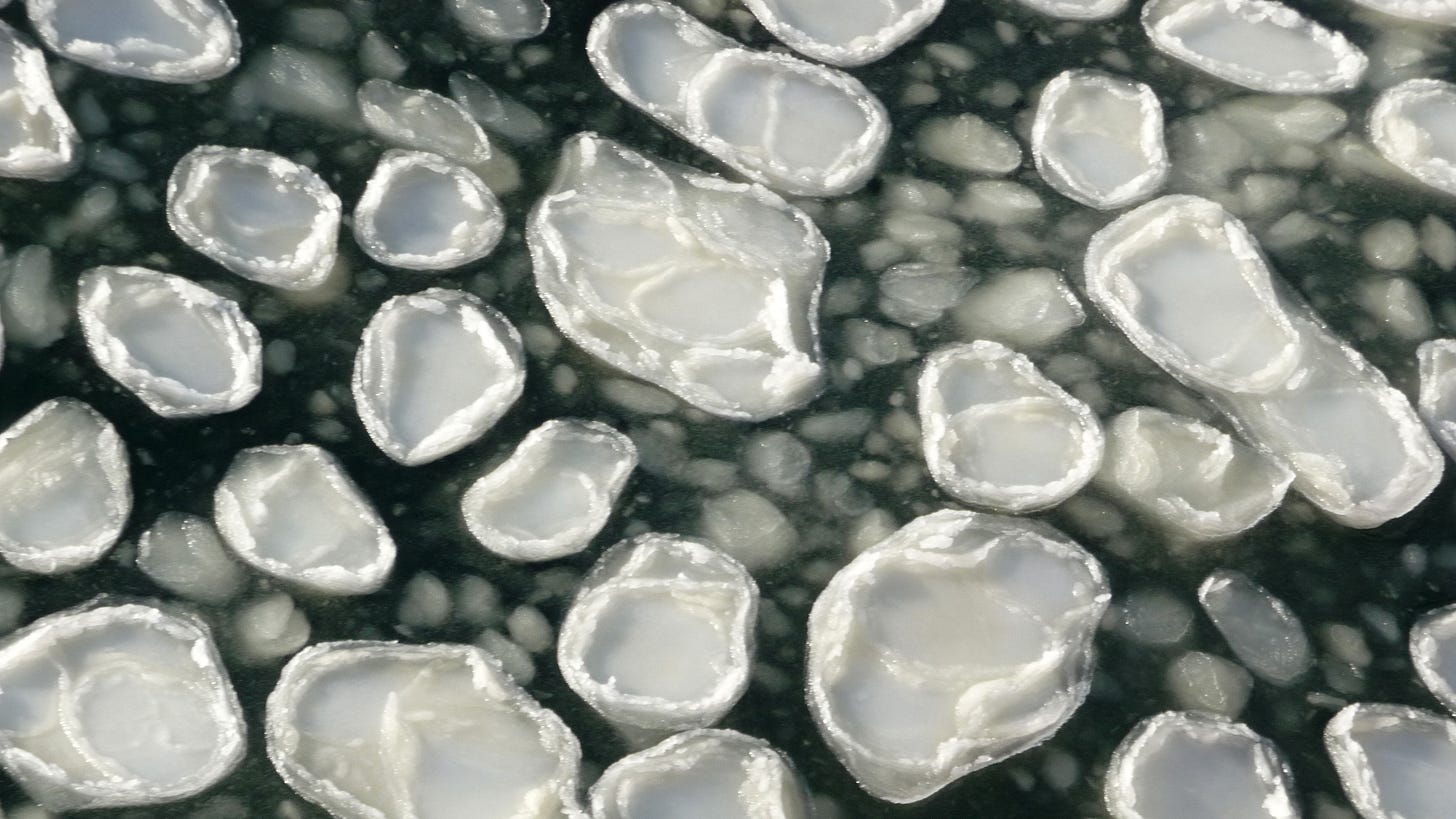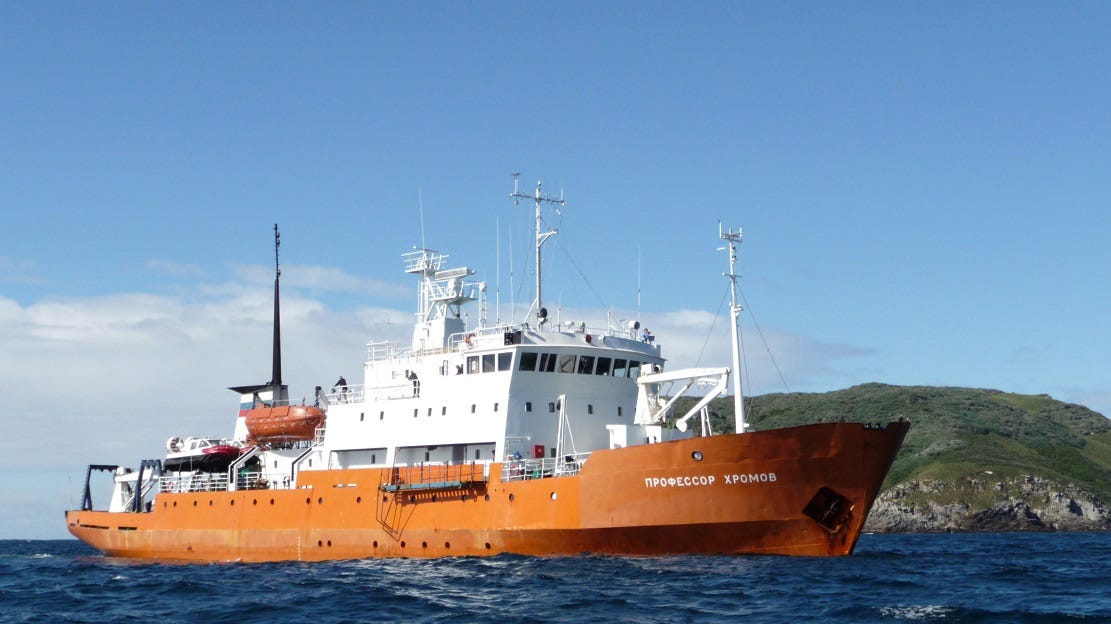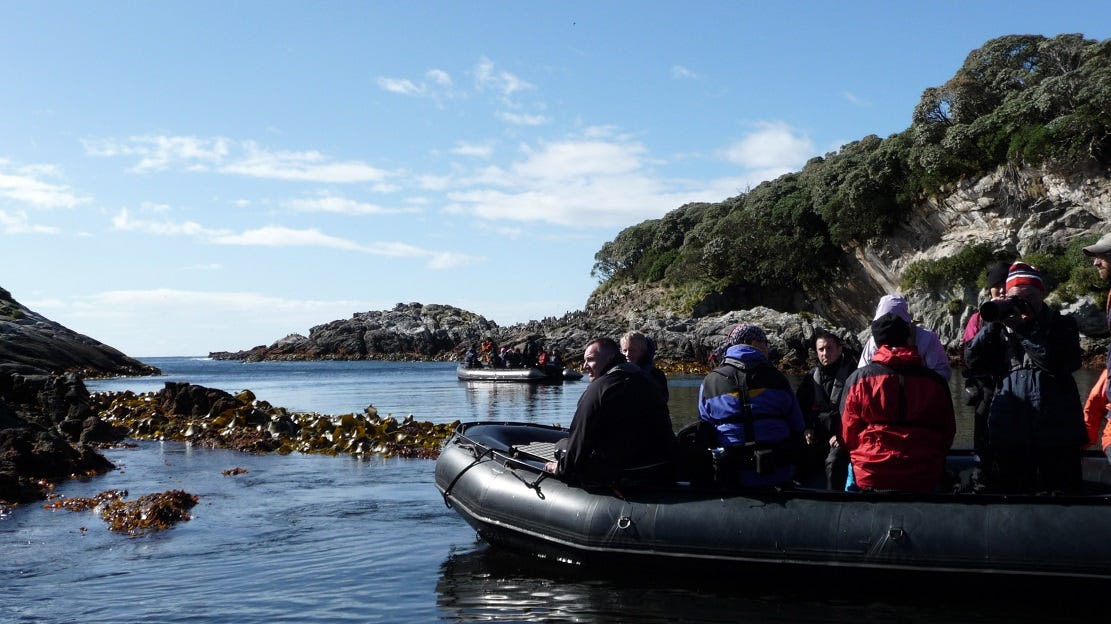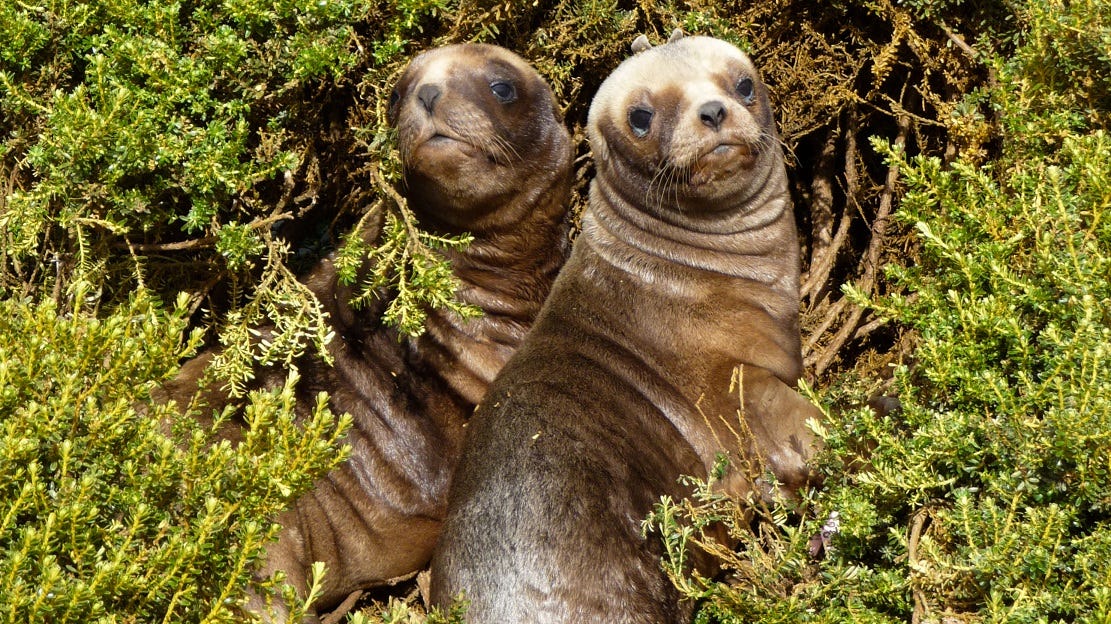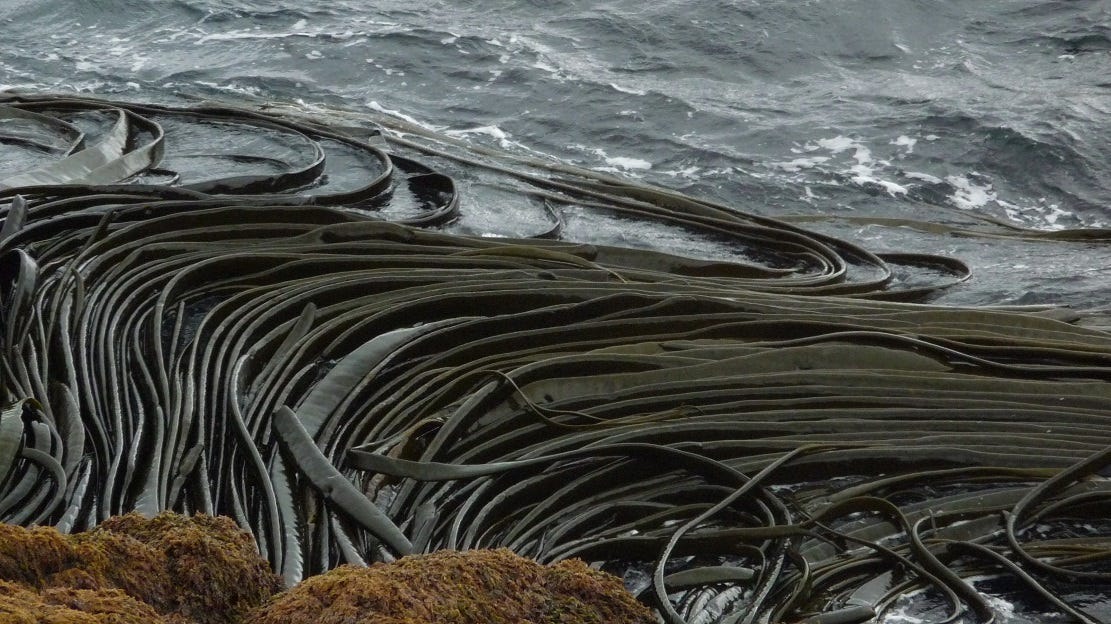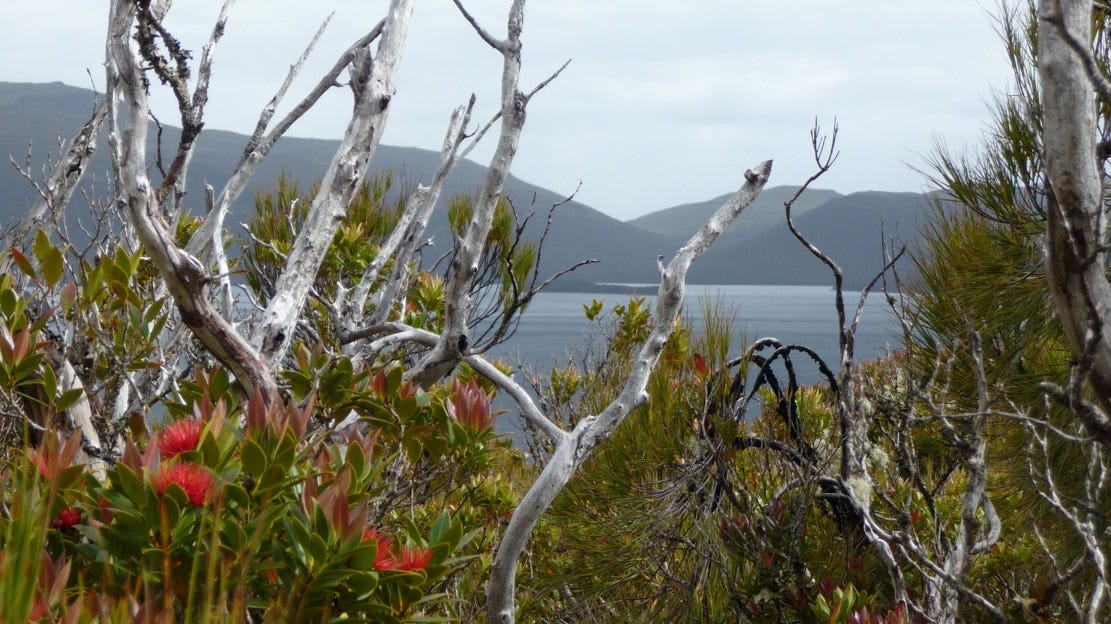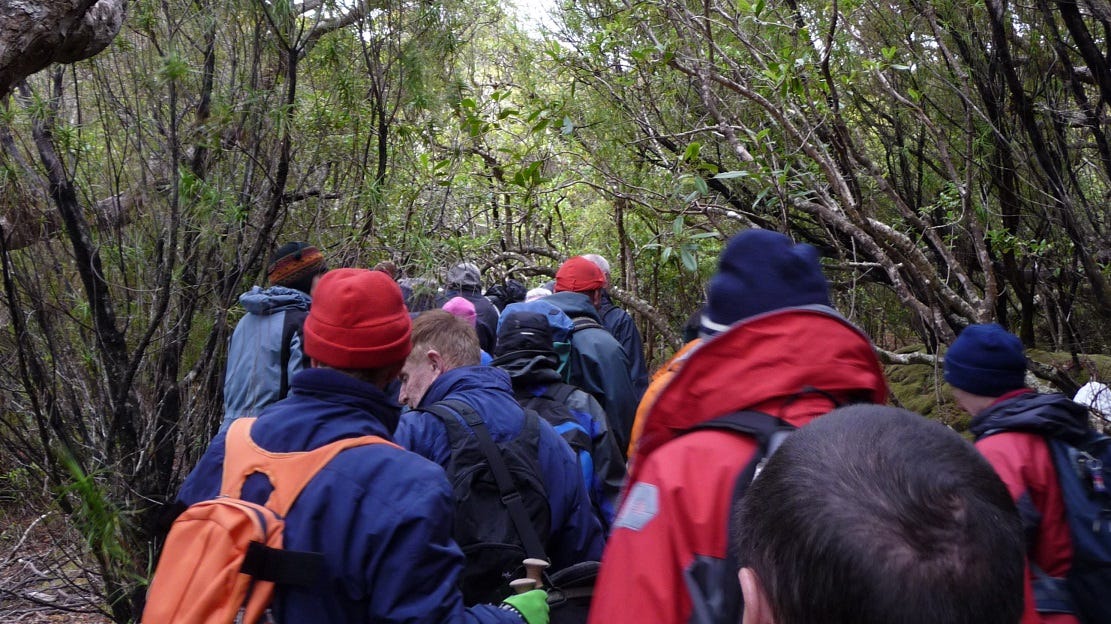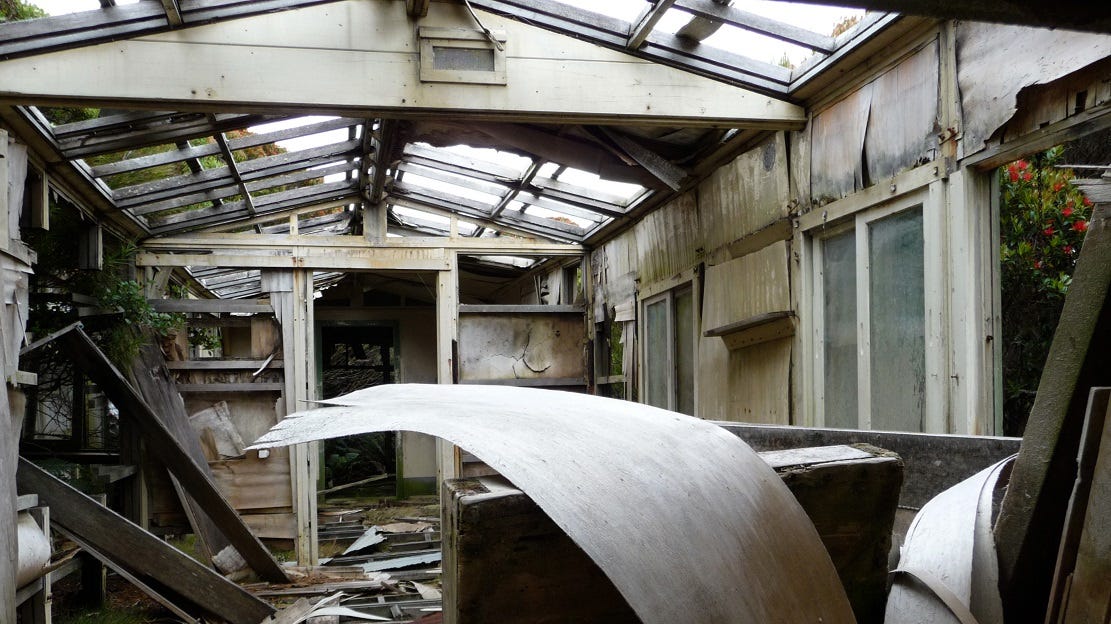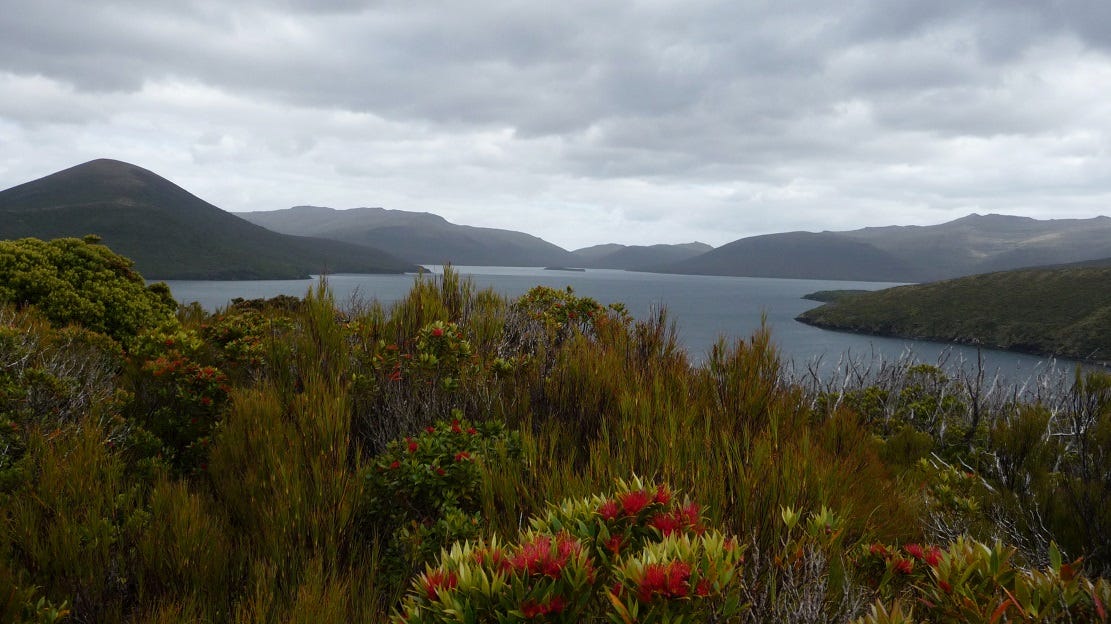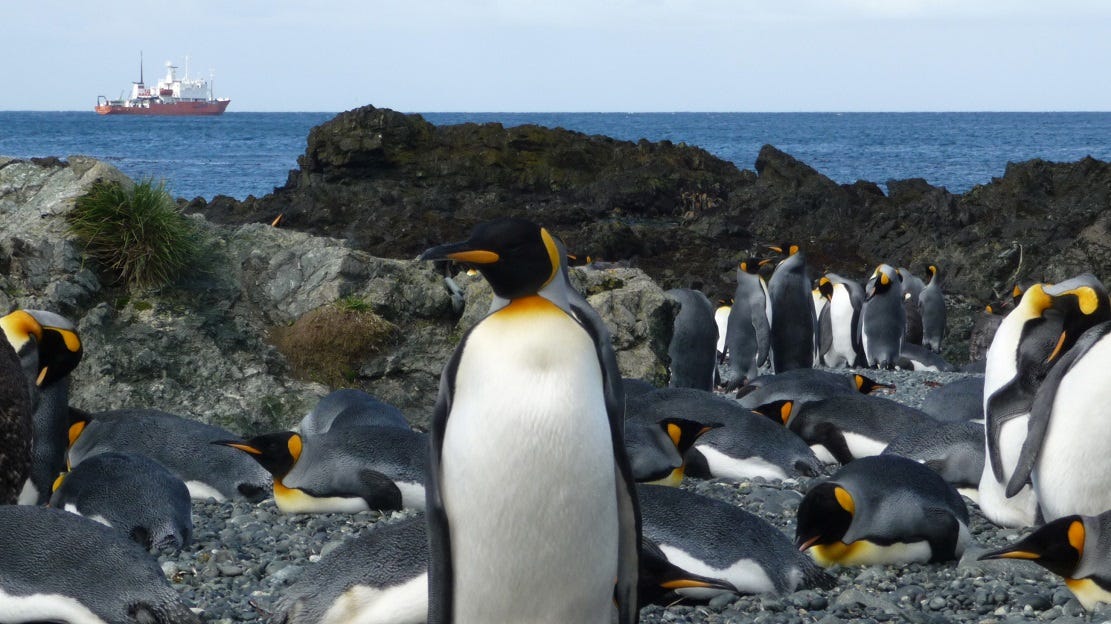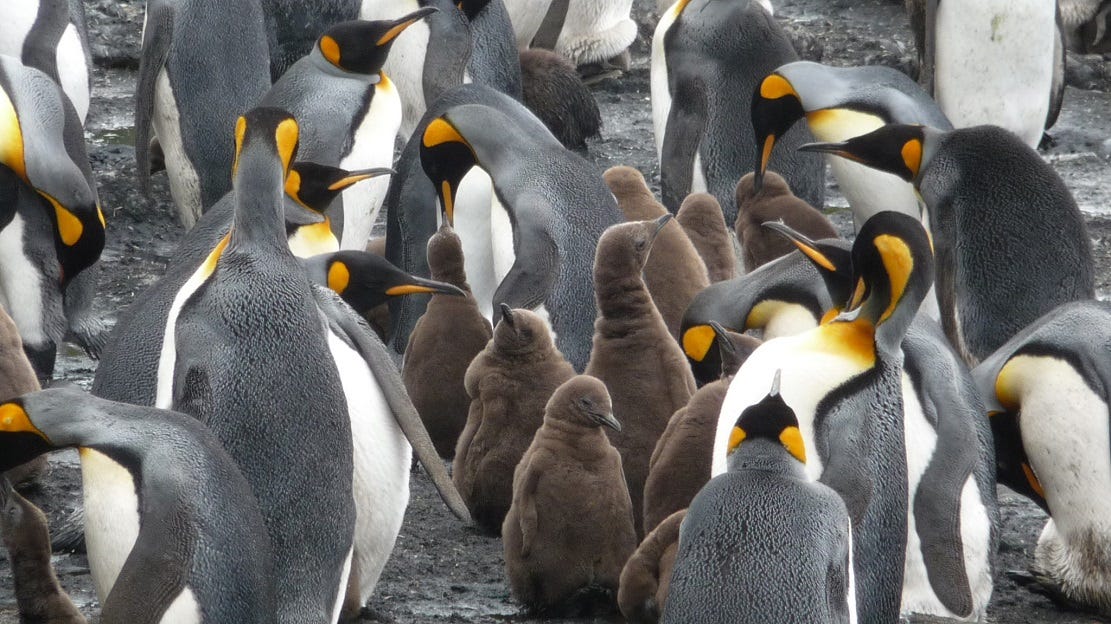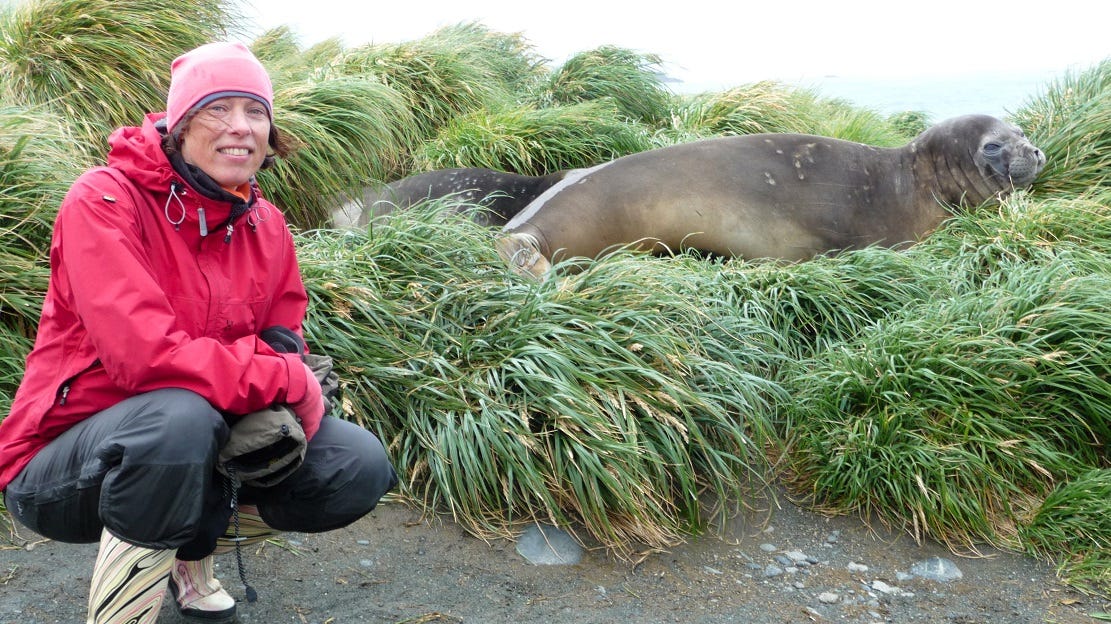Penguins and Pancake Ice - 1
Antarctica, 2009
Man cannot discover new oceans unless he has the courage to lose sight of the shore.
— André Gide
When a Dutch girl in the hostel in Kyoto shared a story about a traveler, who had been on a boat trip to Antarctica, I was instantly smitten. If someone else had done it, then maybe I would be able to make such a trip too. Only a few weeks after my visit to Kyoto I have arrived in New Zealand and as soon as I am installed at my friend’s place on the Northern island I start doing my research on boat trips to the fascinating South.
It doesn’t take me long to find out that there are very few agencies running trips to Antarctica and there is only one that offers the kind of trip that appeals to me. One phone call later my illusion is shattered: trips to Antarctica are fully booked years in advance. My idea of booking a place on a trip for the upcoming season is considered impossible. I am flabbergasted and now even more determined to make it happen. But how? For the moment I shift my focus back to being in New Zealand[1] and to exploring its islands.
The further South I travel in New Zealand the more frequent the thoughts about Antarctica become. When booking a trip on a sailboat to Doubtful Sound I talk with the owner of the agency about my travels and about my wish to go to Antarctica, even though trips seem to fill up years in advance. The woman instantly runs into her office and returns with a booklet.
“Here take this, I am sure they have a place available for you”, she says handing me a brochure from Heritage Expedition, the company I would love to travel with. Back in the hostel I visit Heritage Expeditions’ website again and simply fill out the booking form for their upcoming Antarctica trip. Only a few minutes later I receive an email confirming my booking request.
How good it feels to start walking the Keplar Track the next morning, while day dreaming about going to Antarctica and creating my packing list along the way. Who cares about the fact that the trip has been fully booked for years already; I love hanging on to my dream to go South.
How odd are the chances of sharing a bunk bed, in a hut hosting only fifty people, with someone who will be going to Antarctica in a few days, with the same company I want to travel with? I gratefully grab the opportunity to get more detailed information about what I will need for the trip.
Imagine my surprise when upon return in Te Anau I have an email from Heritage Expeditions in my inbox stating that they have had a last-minute cancellation. Not even realizing it is the weekend, I instantly give them a call. The company’s owner answers the phone, tells me I am in and assures me that the office staff will contact me to take care of the details on Monday. I do not need to worry about not being available that day, I can follow up on their message as soon as I get back from the Milford Track.
Sure enough there is no email waiting for me when I get back from the track. Phoning the company, the lady in the office tells me that she is truly sorry, but that the place had already been given to someone else and that the company owner hadn’t know about it, when he promised it to me. She laughs when I tell her that I am sure there will be a solution or another cancellation.
“Monique, one last-minute cancellation is already a rare occasion. Thinking that there will be another one is a fantasy”, she tells me.
I feel confident though, that a miracle will happen. Imagine my happiness when she phones me a few days later with the message “Monique, you are going to Antarctica!”
She cheerfully admits that the office staff had had a good laugh over my confidence that I would be on one of this season’s trips. And they had been beyond surprised when indeed another last-minute cancellation had occurred. I have long ago given up trying to understand the ways of the Universe; I simply trust that all is well.
It is a fun idea to follow in the footsteps of great explorers like Scott and Shackleton. Men, who braved the Southern Ocean with sailing vessels and equipment that were way less advanced than nowadays. I am quite happy that our boat is a sturdy ice breaker. Traveling to Bluff, the southernmost town of the Southern Island, the pre-trip jitters take possession of my body.
Never really having been on a long boat trip I am not sure what to expect. How will I feel without a shore in sight? Will I get seasick? What will it be like to be in a relatively small space for thirty days with a group of people I have never met before, including sharing a cabin with one of them. In the weeks to come I will find out.
The Spirit of Enderby, a Russian icebreaker, carries forty-eight passengers, the international expedition crew and the all-Russian boat crew. I had specifically wanted to be on a smaller boat; the big cruise ships do not appeal to me. I do not fancy having a choice of restaurants and on-board shops, and prefer a more intimate setting, where I actually can get to know the other travelers. We are quite an interesting and international mix of people: birders, a few relatives of late Antarctic expedition members, a National Geographic photographer and travelers setting out on a once-in-a-lifetime-adventure, like myself.
I share a cabin with a woman from the US. From the start, my attempts to connect with her are in vain. She keeps her distance, not interested in communicating with me or in getting to know me. Our interactions will remain extremely limited; our interests and energies are quite different, at times even conflicting. It makes me appreciate and enjoy the heart-based connections with others even more. Among them are Tracey and James from Australia, Helena from the United Kingdom and crew member Katrin from Germany.
Snares Island
The start of the trip has been a bit more challenging than I had anticipated. We headed straight out to sea and it did not take long before I lost sight of land. The first twenty-four hours at sea came with a fair bit of uneasiness. My body isn’t feeling great after a night of tossing, turning and feeling nausea. We haven’t even reached the real rough waters and I am already experiencing seasickness. The cabin being relatively close to the engines my body has been dealing with the vibration all night long. I doubt I have had an hour of sleep.
The face looking at me from the mirror is as pale as I have ever seen myself and I spend most of the day in bed. I don’t manage to sleep, but at least in this position I feel better than when trying to sit up. It does not feel very promising for the weeks to come, even though the ship’s doctor tells me not to worry. Most people seem to feel better after the first couple of days. Fingers crossed he is right, and my body will get used to the rocking and rolling of the ship. Even better if it gets used to the vibration caused by the engines too.
So far, the remedies against seasickness don’t seem to be very effective. I pull myself together when the message comes that we have arrived at Snares Island, the first island we visit on our way South.
To prevent chaos when getting on the zodiacs, we have been divided into small groups based on our cabin numbers. We all have our own turn; a clear system which works well.
The code of conduct for tours is clear: everyone wears a life jacket and boots need to be cleaned by stepping into a basin with detergent before getting on the zodiac and when returning to the vessel. This is to prevent any plant or animal species to be accidently transported from one place to another. It is not up to us to change an ecosystem.
For conservation reasons we are not allowed to set foot on Snares Island. Instead the zodiac tour takes us along the shore. Getting off the boat and being on the zodiac feels so good. The sea being calm and the sun shining brightly makes it a very pleasant outing. Feeling the sun and the breeze touching my skin perks me up and temporarily brings a bit of color to my face.
The scenery is so beautiful. Never before have I seen kelp this size, and this shade of yellow. The penguins are a joy to watch. I have seen penguins on my trip along the East coast of the Southern Island of New Zealand and it is a sight I don’t easily get tired of.
This is a different species, the Snares Crested Penguin. Writing down the name hopefully will help me to remember it. That said, I prefer to just enjoy watching their playfulness and funny moves. While at this part of the trip I am already in awe seeing a couple of penguins or a few dozen going down the all-natural rock slide; I will be totally blown away by the numbers further South.
The birders in the group - in fact the majority of people on the trip - are enjoying spotting species, which are unique to this part of the world. Even though I give it a try I soon find out that birding may not be one of my qualities. Over the course of the trip birder Adam Walleyn will manage to teach me a couple of things though. One of them being that albatrosses are the only birds having two nostrils. I happily leave it up to him and the other birders and nature experts on the boat to tell me which particular species of albatross, bird, penguin or sea lion I am looking at.
Enderby Island
Another sleepless night later we have arrived at the Auckland Islands, a wildlife refuge, situated three hundred and fifty miles south of New Zealand. Today we visit Enderby Island. In fact, we are spending the day on the island. The island has a full-time research station. It must be quite a fascinating experience to work and live without any of the distractions of the so-called modern world. A satellite phone for emergency use might well be the only means of communication with the outer world. And of course, vessels such as ours, who limit their visits to maybe three or four per year, per vessel during the Antarctic summer.
In addition to the instructions we have had for the trip to Snares Island, we are now told to leave nothing and to take nothing. We are free to enjoy our lunch and snacks in nature as long as we carry out all the garbage, including and especially anything of organic nature. Leave nothing but footprints, take nothing but photos. It is a simple trekking principle, applying even more strict to these kind of areas.
And taking nothing also applies to rocks, feathers and stones. Not easy for a girl like me. At least I can take photos of the amazing shells.
It is a slightly cloudy day and as we are getting further South the temperature is getting lower. It does me well to feel the cold air on my cheeks; it helps me to stay awake. On the other hand, the cold makes it harder for my body during the hike around the island.
It is fascinating to see all the wildlife in this part of the world. The birders are of great help, pointing out Cormorants, Shags, Auckland Island Pipets, Southern Royal Albatrosses, Red Crown Parakeets and Skuas. In addition we are treated to sightings of Yellow-eyed Penguins and the New Zealand Sealion.
The young sealions are the cutest thing to see. They look just adorable. Accidently getting relatively close to a breeding albatross makes me aware of how big these birds really are. They are impressive in flight; seeing them on land puts their size in a whole new perspective. And then there is the kelp. Yet another amazing variety I would never have imagined possible if I hadn’t seen it with my own two eyes. What an amazing world this is.
Each day I see species I have not seen, and often not even heard of before. I don’t think I will ever become a birder, but this trip is definitely making me appreciate birds and animals more. I usually feel gratitude in everyday life, but this experience is taking gratitude to a whole new level.
Yet, no matter how much I am enjoying this day on Enderby Island, my body is giving me clear signs of exhaustion. I join one of the first zodiacs back to the vessel to take some rest now that the engines are rather quiet and I can have the cabin to myself for a few hours.
Tagua Bay
The Auckland Islands have more in store for us. Auckland Island is the main island of this group of islands, which are all of volcanic origin. It is said that it rains on average twenty-seven days per month in this area. How lucky are we to be here on a dry day. This is only day four of our trip and already our third visit is scheduled. Apparently, it is not uncommon for one or more visits to be cancelled. Guests of the previous trip have hardly been able to do any landings. We are having all the luck in the world with the weather circumstances and today looks promising again. Another chance for me to be outside other than taking a few minutes on the cold deck. The scenery is stunning again. I can’t get my head around it being so beautiful and so different on every one of these islands.
Today brings us the joy of bright red flowers, views I could only have dreamt of, and a visit to an old hut. It is also the first time we are setting out as a group.
Once everyone has been ferried to the island, expedition leader Rodney goes ahead. Through a forest he leads us to the hut, which is in a state of decay. In times past it must have been quite a nice place to be for the people, who lived and worked here. What a job it must have been to get all the building materials up here and to actually build the hut!
The Auckland Islands have quite some history that I had not expected to hear of in this part of the world. Since the islands were discovered in 1806 by Adam Bristow several - in vain - attempts of farming and cultivating the land have been made by whalers who wanted to settle here. This included a group of several hundred Brits, who colonized the islands for two years and nine months.
Unless there is human interference, I have no doubt that nature will in the end take down whatever is left of the hut. Empty bottles may, till the end of days, serve as reminders of the past.
While it is quite interesting to learn about the history of the island, I am especially intrigued by its abundant nature with beautiful flowers and dense forest. Perhaps this was the reason the early explorers thought farming might be possible on the island. The beauty of the surroundings feeds my soul, and for a moment I forget how exhausted I am.
Macquarie Island
I have added another couple of nights with barely any sleep and it is starting to wear me out. Contrary to what I would usually do, I have visited the ship’s doctor and surrendered to taking the impressive number of four sleeping pills. It has not been of much help. The only thing that is changing is my mindset. I am now letting go of the expectation to sleep, which makes it bearable to lay awake in my bed. In line with this, I have set my mind to having all the energy I need for the day; we have both a morning and an afternoon landing scheduled on Macquarie Island.
The island rises steeply from an underwater ridge from the ocean floor, which extends all the way to New-Zealand, 1,200 kilometres to the North. It is this unique geological wonder, which has resulted in the island being listed as a world heritage site.
Saying that I am feeling excited does not quite describe it. Only seven hundred visitors are allowed to set foot on the island this year and I feel privileged to be one of them. The high cost of this trip to Antarctica nearly dissuaded me from coming, but, while sitting here on the soil, watching a penguin come up to me, there is only joy. Money is just an instrument to make things happen. The experience itself is priceless.
King Penguins, Royal Penguins, Elephant Seals and yet another amazing variety of kelp. Sitting here and wandering around feels otherworldly and I am enjoying it to the fullest.
It has been a few days since I last had three proper meals on one single day. The morning trip to Macquarie Island gave me a good reason to go for breakfast. The fresh air and the walk on the island have left me hungry. A decent lunch will give me a good start to the afternoon and will most certainly provide me the energy needed for the second landing.
The kitchen crew on The Spirit of Enderby is just as dedicated as the rest of the crew. I am by far not the only one having a food allergy or being vegetarian. Every meal is paid the greatest attention to what is being prepared for each of us. They work long days to serve the forty-eight guests and the entire staff.
There is a vast number of people working behind the scenes: the Russian captain and his crew. Whenever visiting the bridge we meet some of them, while others are working below deck, where they take care of the engines. Their work is invaluable. Imagine what it would be like to have a mechanical problem in this part of the world. Every tiny detail of the system needs to be in order to keep the vessel going in the often harsh polar conditions.
Wow, wow, wow! This afternoon’s visit is a feast for my eyes and ears. Wherever I look I see penguins; massive numbers of King Penguins. It is mind-blowing. Even more mind-blowing is that we are told that in fact there are relatively few penguins around this year.
As with all landings we have been ordered to keep at least a five metre distance from all animals. As I already had experienced this morning, the animals do not have a five-metre rule towards us humans. They happily give in to satisfying their sense of curiosity.
I wander off to the left, approaching the colony from another angle. It truly gives me a different perspective. It is also nice that there are no other people around. When in a group, someone is always expressing their sense of awe, or pointing out a funny situation. And funny situations are plentiful in the animal world. Now it is just me. At least that is what I briefly believe.
Looking up at the entrance of the hut in front of me, I see someone watching me. Ian, who is a member of the crew of the research base, is observing the colony from the hut. He signals me to come closer and invites me in the hut. He is just about to leave and tells me I can stay here as long as I want.
“Just do not disturb the penguins when you leave the hut”, he tells me.
The inside of the hut gives the impression that it is from time to time used for overnight stays. I spot a weather-stained mirror on the wall, a sign ‘Please use wisely’ and another one ‘For sale’, as well as information on where to get water for the Sandy Bay Shelter and how to treat it before use. It feels cosy in the shelter.
Looking out of the windows is a treat. Wherever I look, I see incredible numbers of King Penguins. Adults standing in groups, surrounding their young to protect them against the skuas, who feed on penguins.
I am surrounded by penguins and there is no need to keep a five-metre distance. In fact we are separated only by the walls of the shelter. This is like nothing I have ever experienced before. My ears are taking in the penguin chatter; I had no idea how talkative they are. My eyes are trying to take in all that is happening around me. My mind does not seem to be able to understand it. I am taking hundreds of photos.
Wherever I turn my eyes I see something that is worth a picture. How incredible it is to see the grey-white-yellow penguins having furry brown young. And then there are the young, who are in the process of shedding their furry coat, transitioning to their adult coat.
I could stay here for many more hours and still be amazed. Common sense tells me it is not a bad idea to return to the group before they have all left the area.
Not surprisingly there is a rather big base on this island, which we visit as well. I find it interesting to see what it is like for the people working and living here and it feels both strange and privileged to sit down in their mess. The atmosphere in the small community feels good.
Macquarie Island has the southernmost post office in the world. Quite a few people grab the opportunity to have their post cards for family and friends stamped. I buy some stamps, which have images of the animals and birds of this beautiful piece of earth.
We set out on a walk with one of the people working at the base, which also serves as a weather station. On this part of the island the sealions and sea elephants can be seen in every corner. It is definitely much more quiet than in the King Penguins colony. What an amazing day.
I have been so overwhelmed by today’s experiences that I had temporarily forgotten how tired my body is. Four days and nights at sea and the hours of sleep I had in total can be counted on my two hands. No wonder the exhaustion kicks in when I am back on the vessel. The ship’s doctor, has given me a different kind of sleeping pill. Fingers crossed for tonight.
[1] Stories about Monique’s experiences on the hiking trails in New Zealand are published in her book Itchy Feet.
This story was published in my book The World at my Feet and is offered to you for free on the occasion of one year of sharing here on Substack. Thank you for being here with me!

